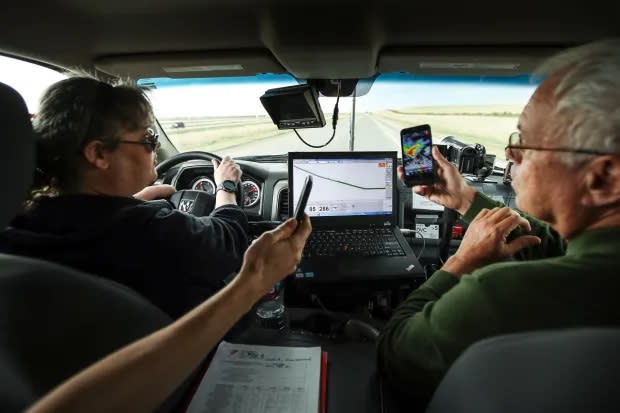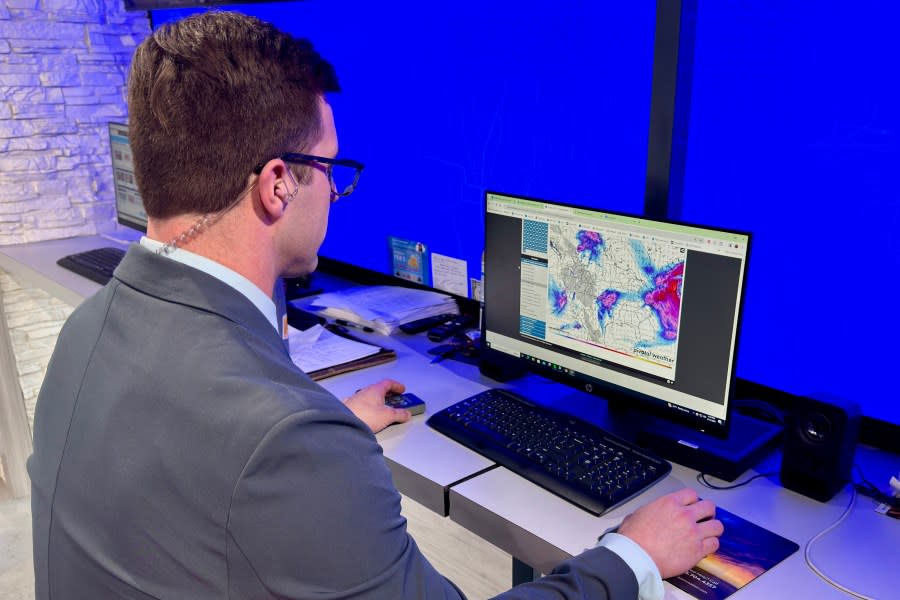An eye on the sky — storm spotter classes set to begin
JOPLIN, Mo. (KSNF) — As spring quickly approaches, so does the threat of severe weather — but before severe weather season ramps up, the National Weather Service (NWS) wants to prepare trained weather spotters, the nation’s first line of defense against severe weather.
The National Weather Service office in Springfield, Missouri is now accepting sign-ups for their annual severe weather spotting classes.
There are two opportunities for those in the NWS Springfield County Warning Area, or CWA interested to become trained severe weather spotters — also known as Skywarn spotters. Virtual courses are set to take place on Monday, March 18, from 7 p.m. to 8 p.m., and Thursday, April 11, from 7 p.m. to 8 p.m. You can sign up HERE for one of the two courses being offered.
During the free, one-hour webinar — Meteorologists from the NWS office in Springfield will discuss NWS severe weather forecast products, forecasting approaches, science, sending weather reports, and how to prepare for the upcoming spring severe weather season.
| NWS Plans Statewide Tornado Warning Drill For Kansas, Missouri >

Skywarn is a volunteer program with more than 350,000 trained severe weather spotters. According to the NWS, these volunteers help keep their local communities safe by providing timely and accurate reports of severe weather to the National Weather Service.
Meteorologist Angelica Soria with the NWS Springfield office says having trained spotters on the ground helps the public understand what to expect from severe weather.
“It’s just very good for ground truth and helps us match what we’re seeing on radar, versus what’s happening in public, and it also helps to prepare downstream of the storm, what those people may see with an incoming storm,” says Soria.
According to Soria, spotters are vital for those in the path of a storm. “Having those volunteers on the ground helps those downstream of the storm understand the conditions they can expect. For example, if spotters are reporting 70-mile-per-hour winds in Joplin, those downstream in Springfield know exactly what to expect,” says Soria.
| What Joplin Residents Will See During The Solar Eclipse >

The NWS says in an average year, the United States experiences more than 10,000 severe thunderstorms, 5,000 floods, and more than 1,000 tornadoes. Although Skywarn spotters provide essential information for all types of weather hazards, the focus is reporting on severe local thunderstorms. KSN Meteorologist, Chase Bullman says he relies on spotter reports to inform viewers of a severe weather threat.
“Storm spotters are essential when it comes to public safety, especially in the midwest, but specifically here in the Four State area. We’re in a weird situation with our radars being spread out, so spotters fill in the pockets of where we can’t fully see the entire storm. They give us that good ground information of what we are actually seeing — based on the fact that a lot can happen in those areas where radar coverage isn’t ideal,” says Bullman.
“It all comes down to public safety. If we can get reports from our spotters in the field, we can then quickly relay that information to the public. If you think about it, spotters save lives because their information has a direct effect on the severe weather preparedness plans of those in the path of a storm,” says Soria.
You’ll find more information on Skywarn and the 2024 virtual storm spotting classes, HERE.

